A drive from Silicon Valley to Los Angeles shows why plug-in hybrids still make sense in a growing EV world.
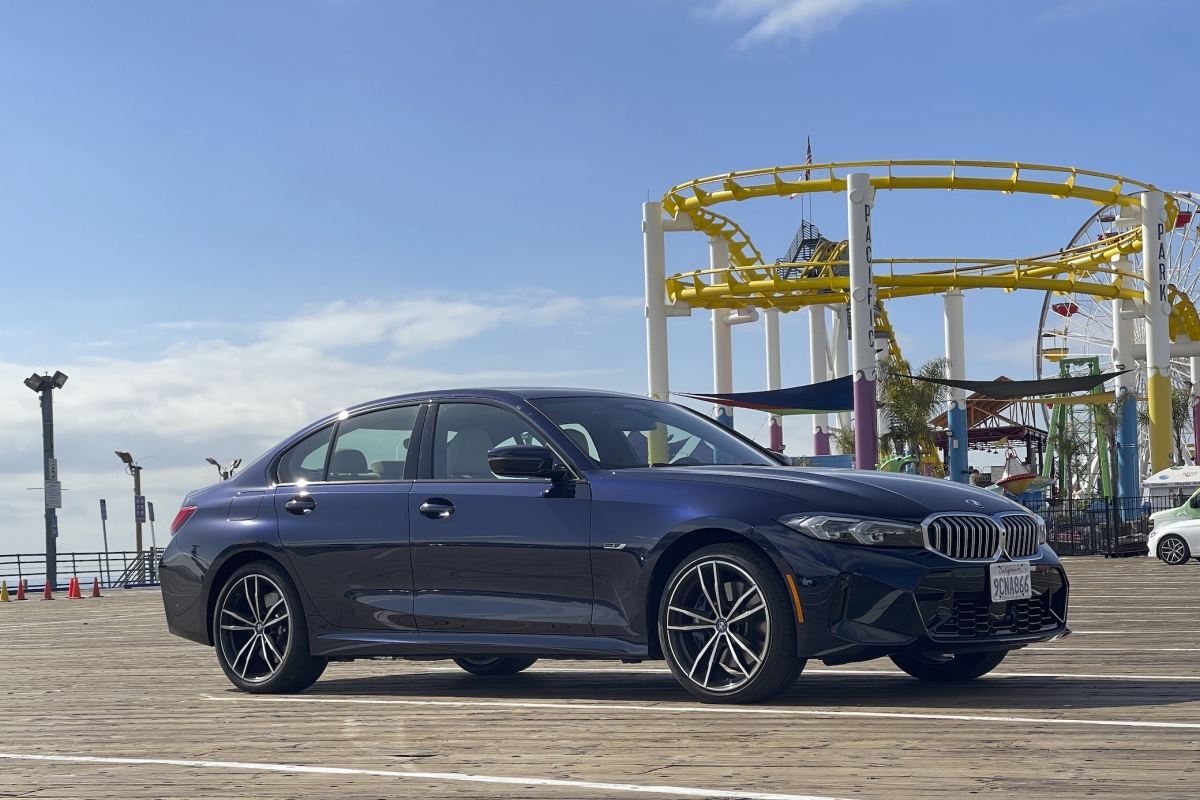
Electric Vehicles (EVs) are undoubtedly the future for the automobile – at least for the next decade anyways, until governments and manufacturers come around to e-fuels…
However until then, if or when, the car industry is firmly committed to producing EVs. Like everyone else, I’m all for anything that is an improvement over whatever it replaces and so EVs ticks almost all the boxes.
One very big box that remains unchecked, however, is the business of charging. If you are an apartment dweller like me, who doesn’t have regular access to a personal wall box or is using your EV for a road trip, then you’ll know that you have to set up an account with the charging provider, and store your credit card number. And since there are several operators, it would be prudent to hold several accounts to minimize the chances of not being able to charge your EV when need to.
Oh, on road trips, charging stops have to be planned lest you be stranded with a dead EV.
Compare this with the convenience of refuelling conventional Internal Combustion Engine (ICE) cars. The drive down the I-5 to Los Angeles takes you through one of the most uninhabited places in California. Yet, you could still find a gas station with no more than 25 miles between them.
You can drive up to any station, use any method of payment, including cash – imagine that, fill up and be on your way for the next 400 miles or so. All in 10 minutes or less.
While EV charging technology is getting faster, and over time will be more common, the business of paying for the charge is ridiculously complicated to paying at the pump. No amount needed, just hand over your money and go. How is this progress?
Okay, I’m sure someone is working on making EV charging more convenient. Wake me up when September ends.
Testing the hybrid theory
Until charging an EV becomes as convenient as refuelling, perhaps hybrid cars will be relevant in the sense that they offer all the advantages of an EV without the drawbacks. This proved to be the case when I drove a 2023 BMW 330e from Los Gatos to Los Angeles.
The car was chosen on the assumption that its 107hp electric motor would be sufficient for pottering around the city while the 181hp 2.0-liter turbocharged four-cylinder engine would have the legs to handle the endless stretches of Interstate Freeways without breaking a sweat. Working in tandem with the electric motor, there’s a combined output of 288hp and 310Nm at its driver’s disposal.
Over 300 miles or so of interstate driving, the motor, along with regenerative inertia and braking would have plenty of time to charge up the batteries so I essentially could cruise in the city.

Well, this didn’t quite go how I imagined it would. Not exactly anyway.
When the 330e was delivered, it arrived with a fully charged battery which turned out to be good for an EV range of around 20 miles or so. Left to its own devices, the BMW utilizes its battery power almost exclusively until it runs out of juice or under particularly hard acceleration whereby the ICE motor wakes up to deliver the required thrust.
So far, so good. However, it soon became apparent that even on the freeway, it was still driving in EV mode. Over more hours spent in the car, I found the button to hold the battery charge, which forces the ICE engine to take over and top off the Lithium-Ion cells.
Except that by the time I discovered this, the EV battery had run itself down and now the car behaved not unlike a Prius in the sense that it would only put in a mile or two’s worth of juice and call upon the electric motor for momentary assistance.
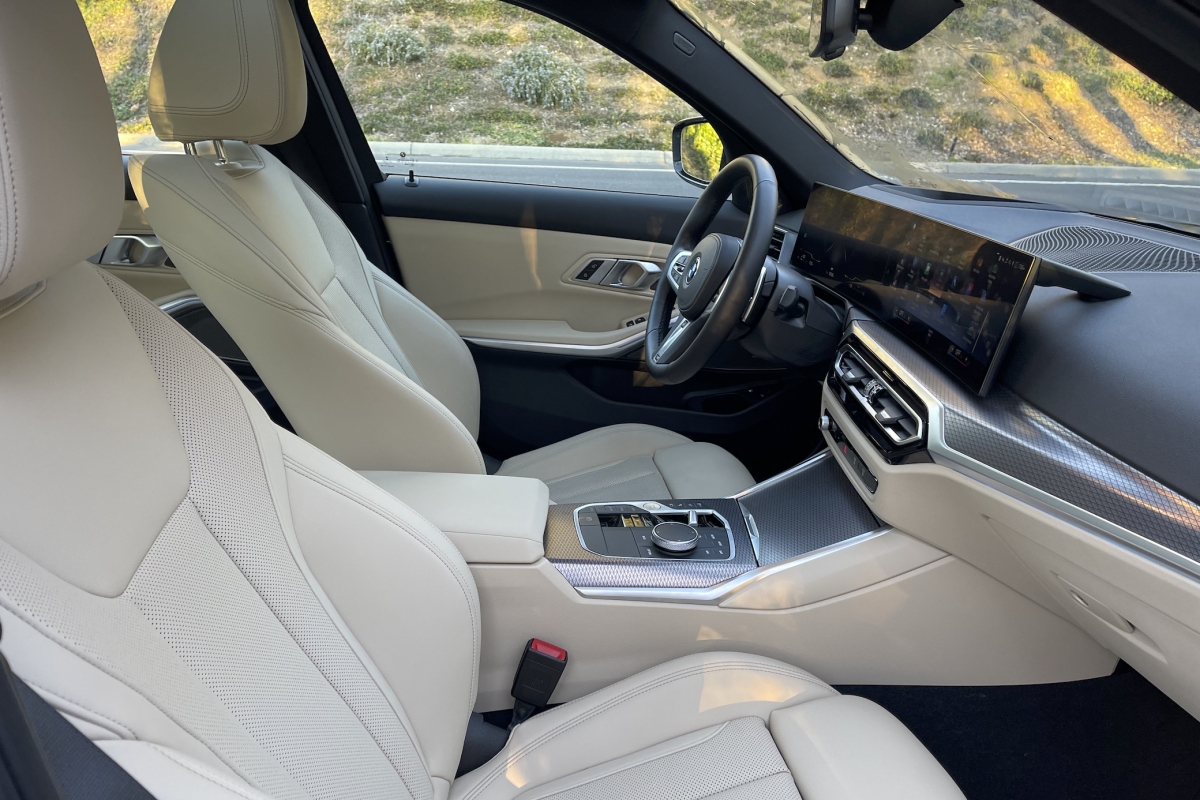
As we munched the miles away, I waited for the EV battery’s range to charge up to its 22-mile range but it never really happened. Setting it in battery hold mode would put the miles back into the battery pack, but it also takes a toll on the ICE’s fuel consumption. From a 53mpg average, driving with in battery hold saw the consumption dip to 39mpg.
This then compromised the range of the 330e as it has smaller fuel tank, just 10.6-gallon, compared to the standard model’s 15.6-gallon capacity.
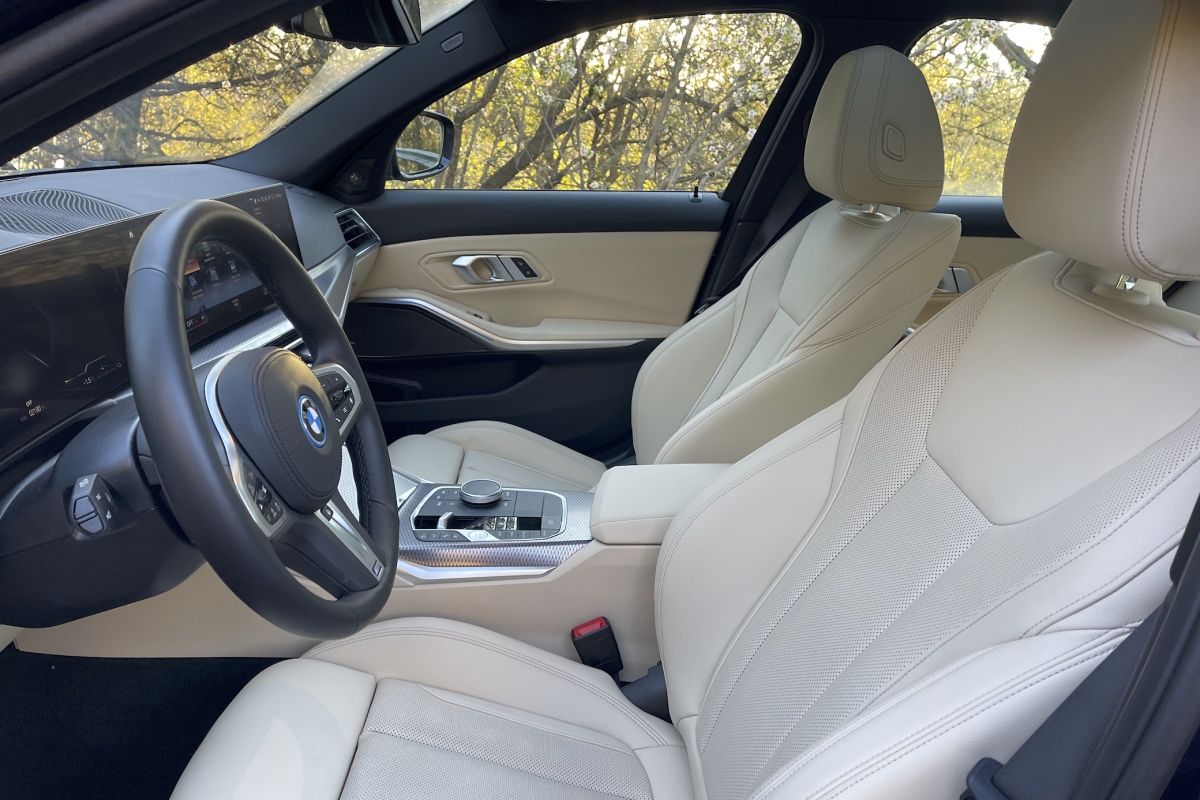
Still this was by no means a problem as gas stations were readily available throughout the route. When the time came to fill up, I also looked for a place to charge the 330e’s 12kWh battery while I having a quick lunch.
Near the gas station and within a hundred feet or so of a Denny’s, I found a bank of 4 or so charging stations; 2 of them were in regular “EV-charging only” lots and the other 2 were for EVs with disabled placards.
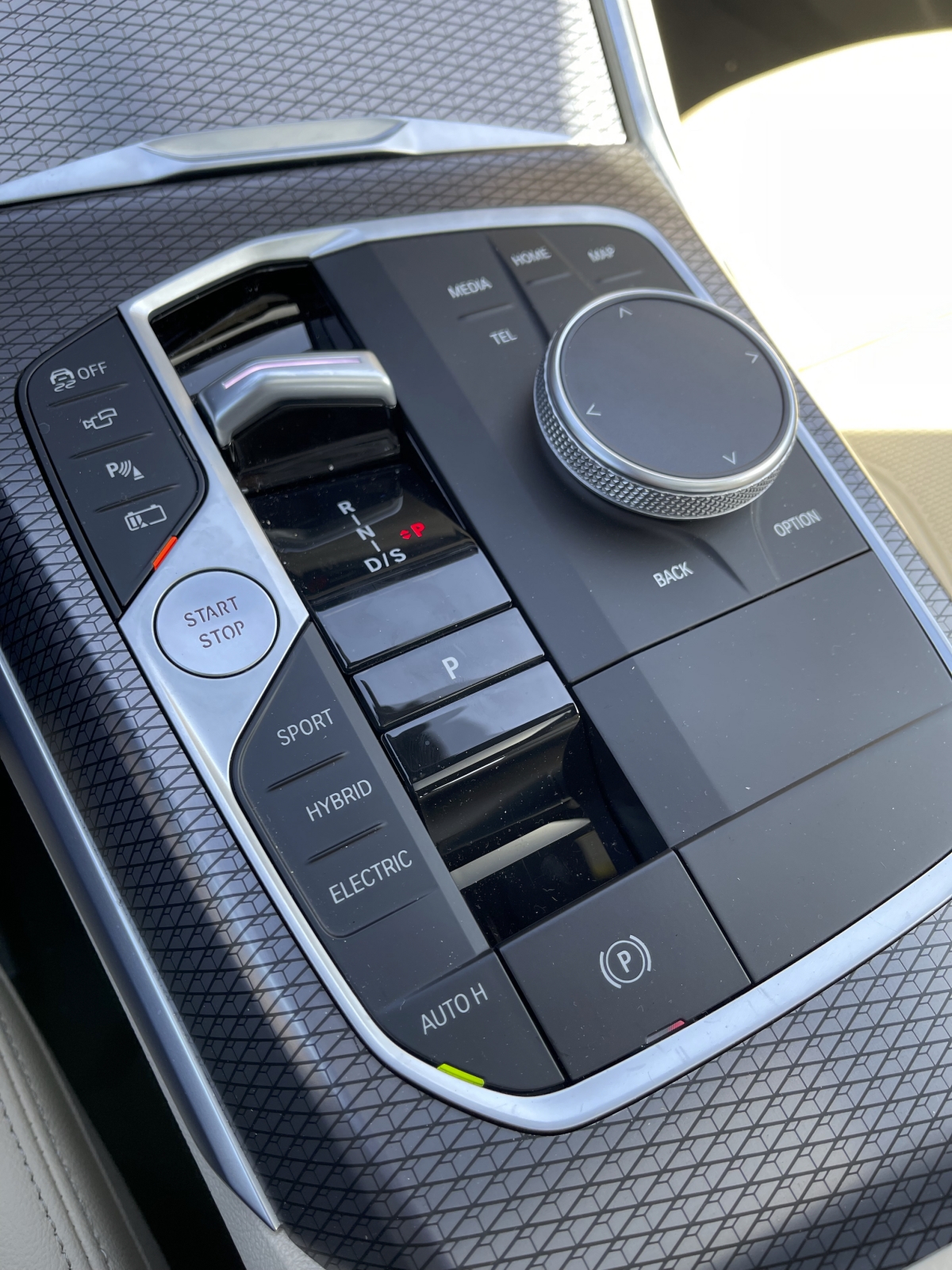
Someone in a Ford Mustang Mach-E had just beaten me to one of the available charging lots, so I pulled up to the other charger next to it — only to find out that it was not working. The other two in the blue lots were available, but I did not want to risk incurring the wrath of the ADA brigade or some Karen and risk a fine or worse… getting TikTok’d.
Still, this was not a problem as I had simply filled up the BMW’s gas tank and was on my way in 10 minutes or so. No imagine what would have happened if I were driving an EV…
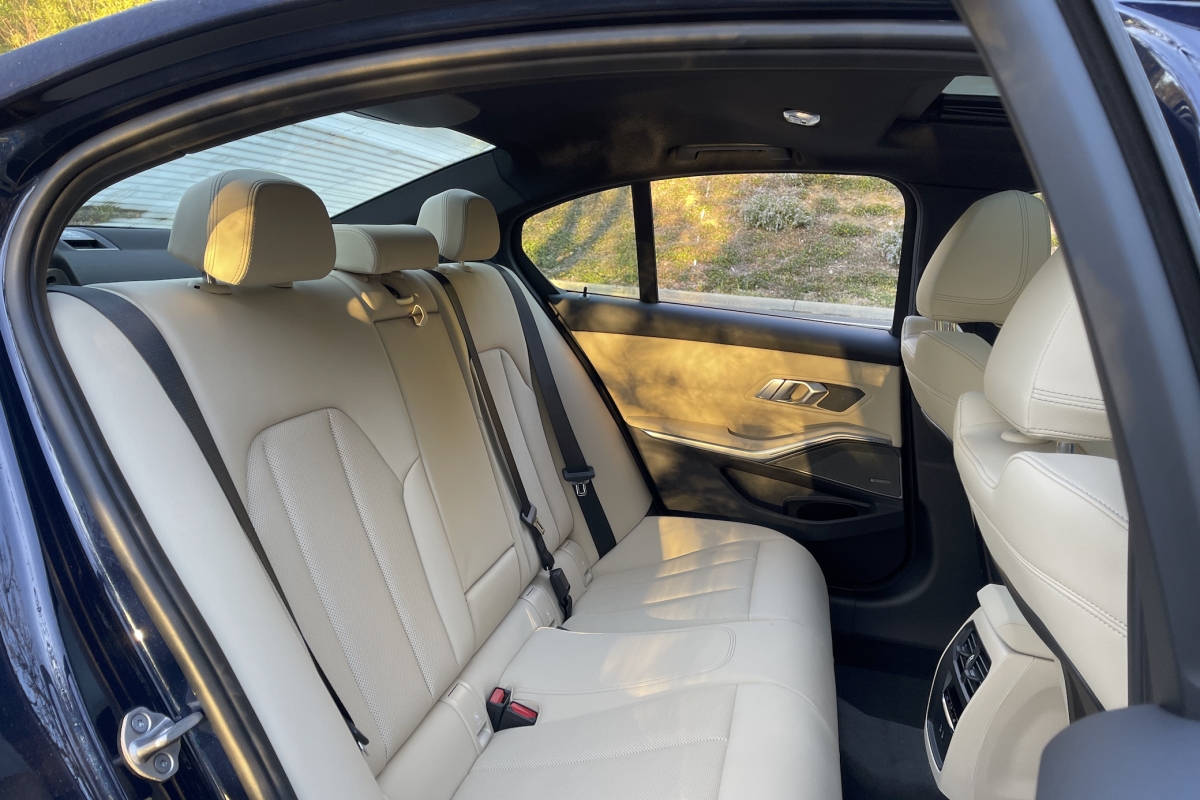
The 330e did vindicate itself as a plug-in however, as I began my approach to LAX. It certainly felt like I was landing because of the long downhill stretch from somewhere near Grapevine towards Santa Clarita on the I-5.
By the time I passed Beverly Hills on the I-405, the descent had helped me accrue nearly 11-miles of EV range. This was immediately put to use on the stop-start rush hour congestion as I arrived around 4:30pm.
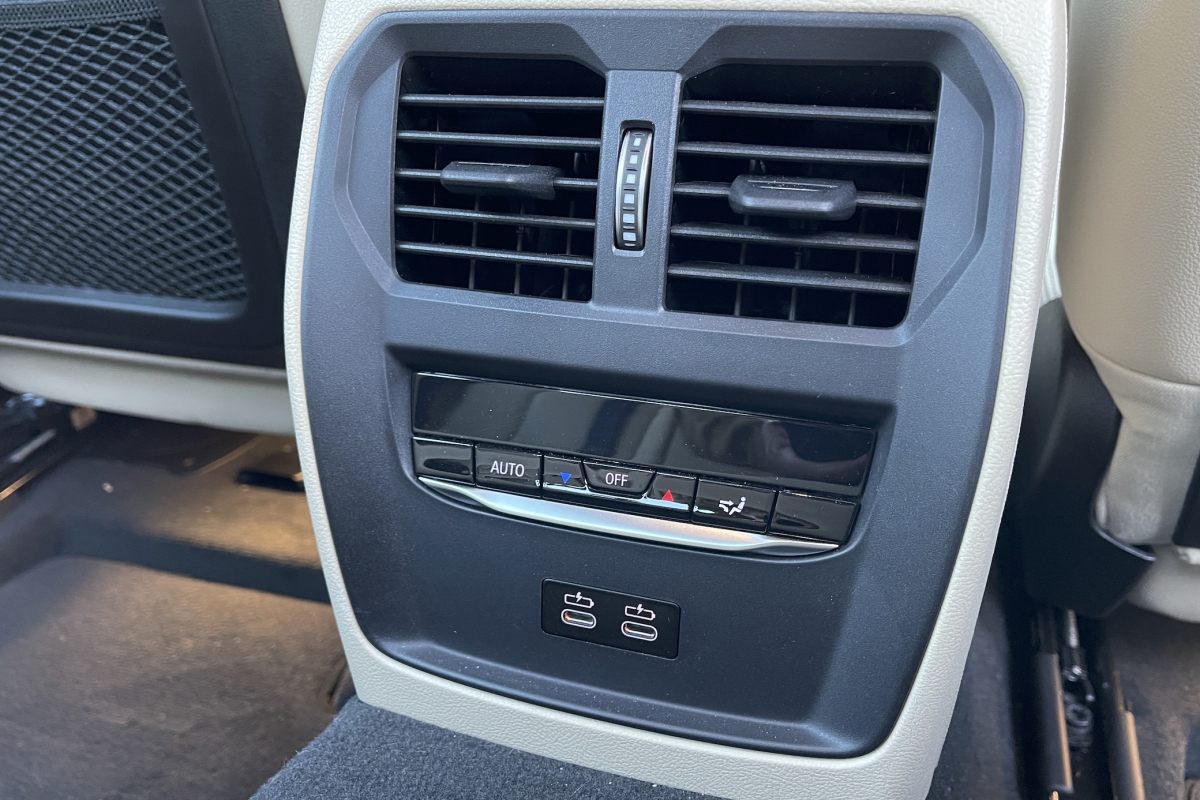
Does it drive like a 3 Series?
When presented with a twisty road such as the Angeles Crest Highway, the combined output of the 330e worked a treat to make for an entertaining drive. It may carry an extra 547lbs over the standard 330i, but the additional 33 horsepower of the ‘e evens out the weight penalty. This is evidenced by the identical 0-60mph times claimed for both the 330i and 300e.
Carving through the canyons, the suspension of the 330e was also calibrated well enough to disguise its additional weight which would be akin to carrying a pair of large adult passengers all the time. You would have to enter a corner at around eight-tenths and the tires would still not complain with squeal nor slide.
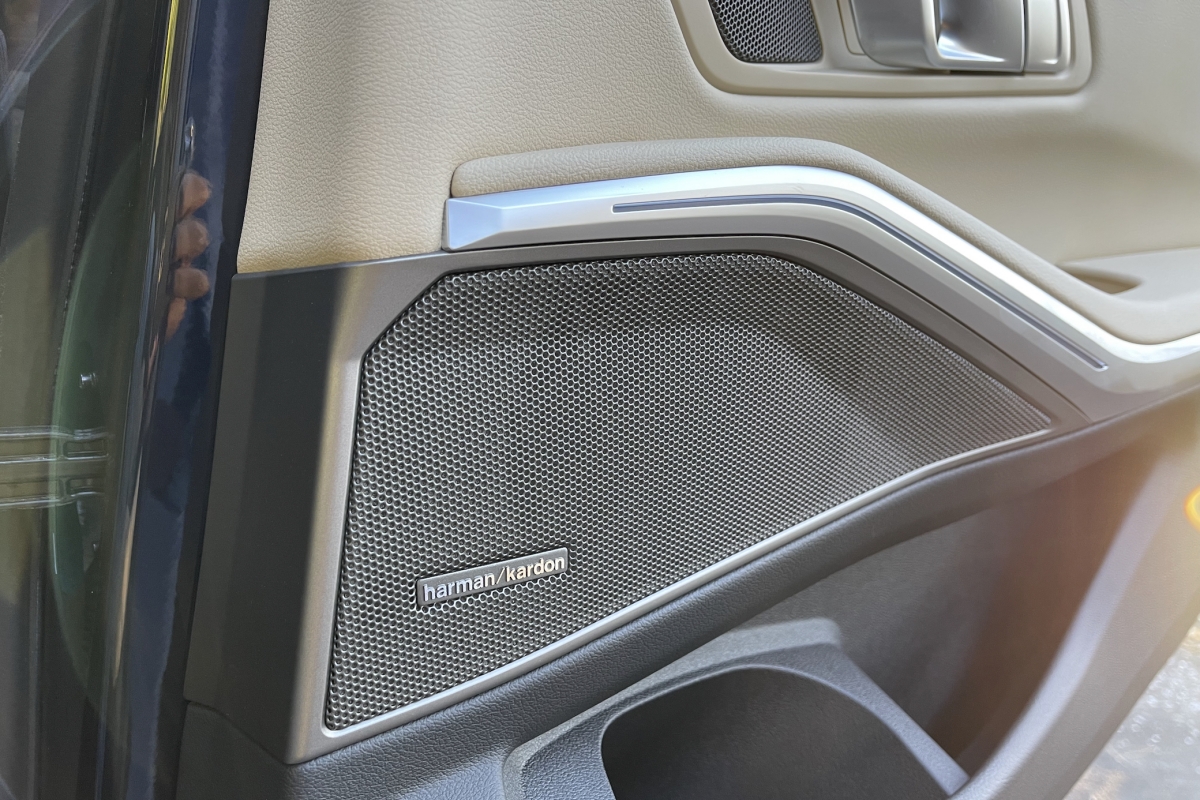
It’s on roads like these that reminds us why sedans make so much sense over SUVs. You don’t have to wrestle it and fight the laws of physics with a high center of gravity. With the 330e, its additional mass probably even helps the handling as most of its extra weight is located beneath the luggage bay, over the rear axle, inadvertently improving its rear wheel drive traction.
For those who want even more traction, they would do well to consider the 330e xDrive variant driven here. The additional hardware raises the curb weight by 97lbs over the rear-wheel drive 330e.
The 330e’s suspension which is evidently tuned for ‘European’ driving speeds feels well sorted when driven as such, however around parking lots and over speed humps, the back end does a convincing impression of a skateboarder’s ollie at anything more than coming to a near dead stop.
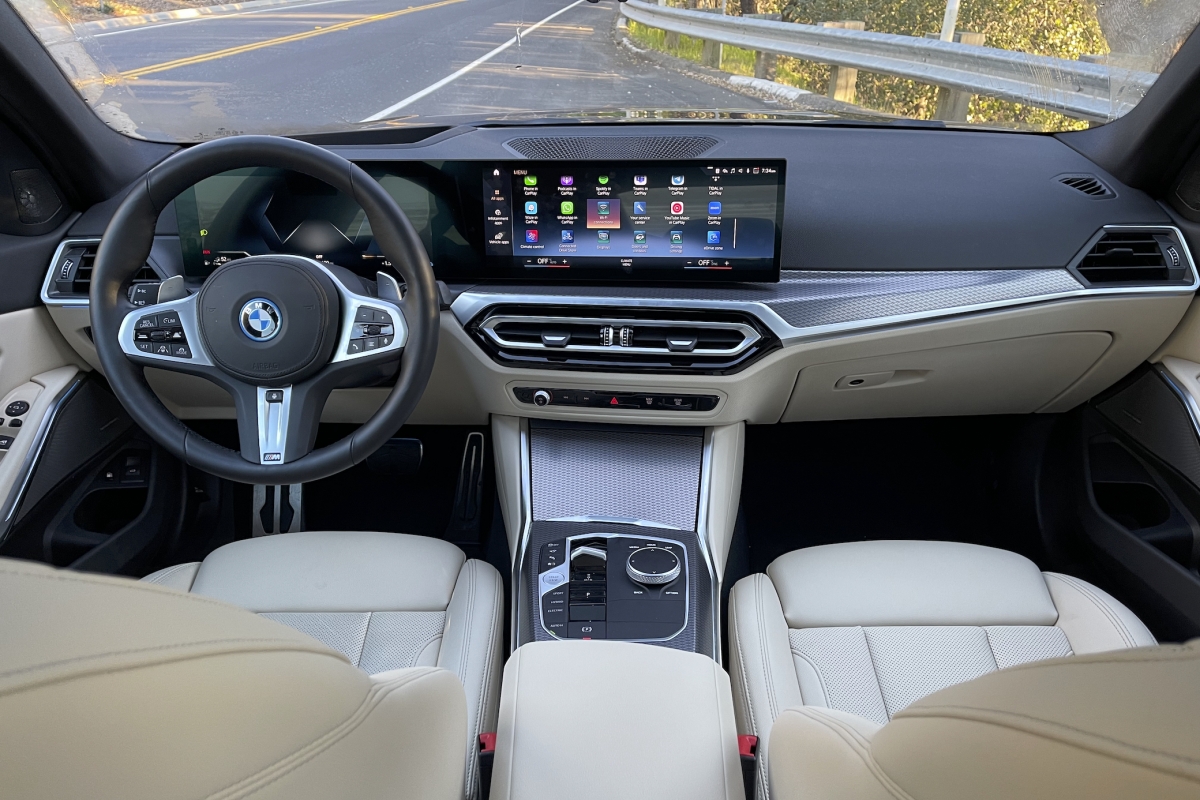
Creature comforts
In addition to the usual high standards of luxury and quality we have come to expect in a BMW, the ace up the 330e’s sleeve was the pairing of its Dynamic Cruise Control (DCC) system with the EV drive. On the countless start-stop snarl-ups around LA’s freeways; 405, 101, etc, the speeds were low enough to travel exclusively on battery power while the DCC made these episodes of congestion painless.
The integration of wireless Apple CarPlay is also another crucial feature in making the BMW 330e can easy daily driver for almost anyone. What would really help in making this car a more compelling case as an alternative to an SUV would be to offer it in Touring (BMW-speak for wagon) guise. At this point, it might as well make mine a BMW 330e xDrive Touring and would be a compelling alternative to the like of an Audi A4 allroad, which currently isn’t available as a plug-in hybrid.
While the BMW 330e had all the modern features to make the everyday commute painless, it curiously lacked a powered trunk lid. First world problems right? However somehow, this one omission gave the impression of an entry model. Hard to swallow when you’re looking at a car that costs the best part of $50k.
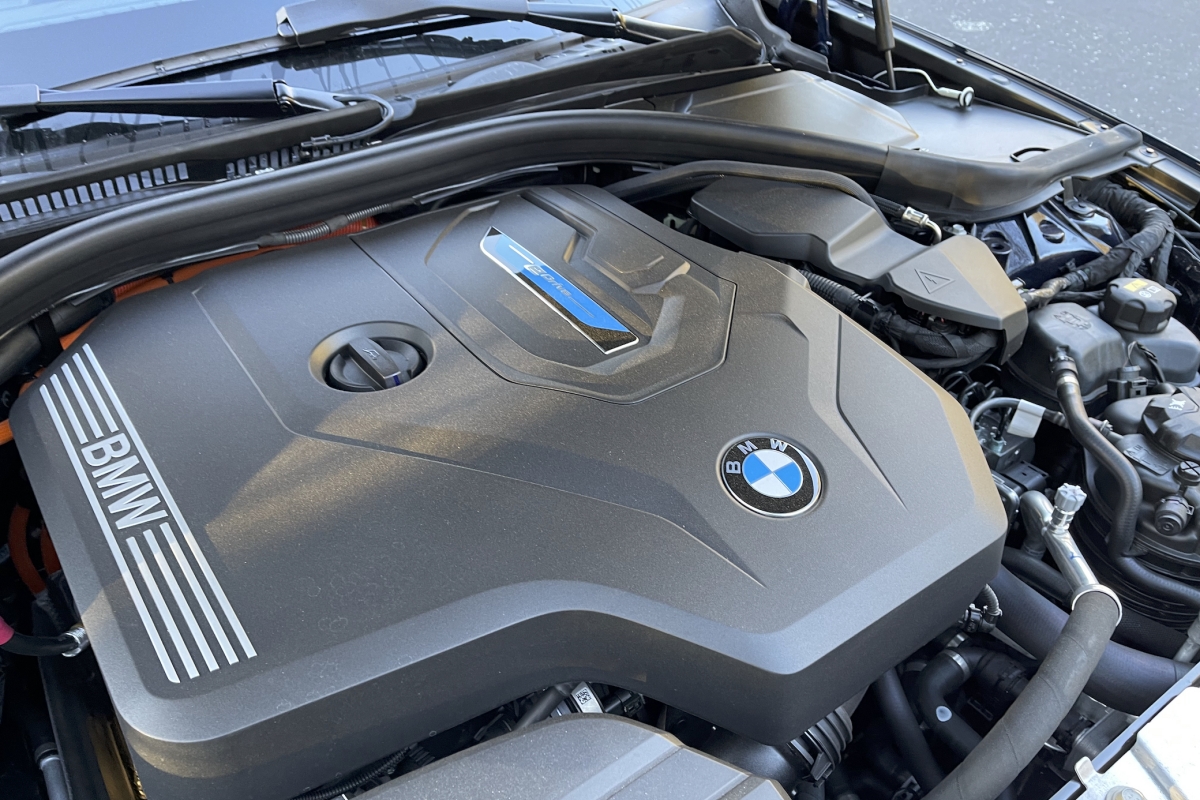
En route to the places we stopped at – the usual touristy stuff, as well as friends I met, somehow chargers were not as readily available in the places I parked. I would have had to go out of my way to find a charger. And this, is my point. Until the day comes when charging becomes as convenient as finding a gas station, I’ll hold off just a little longer on switching to an EV.
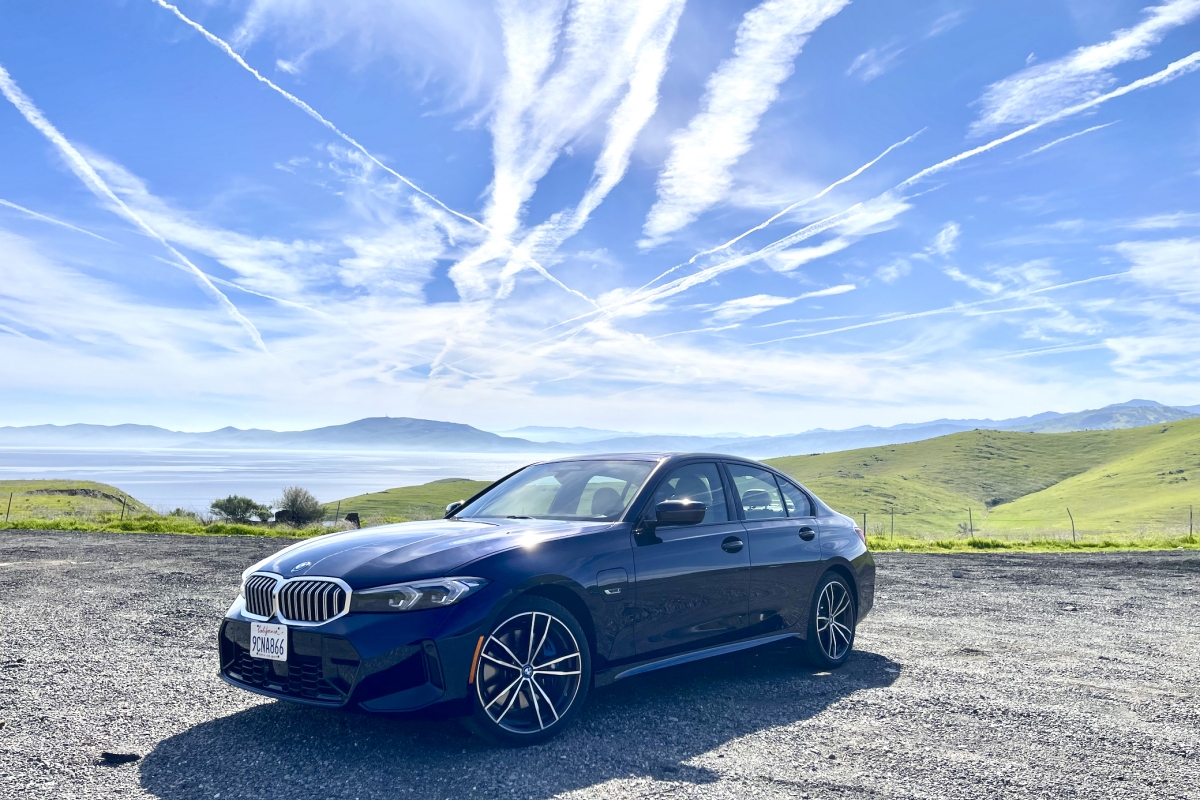
Technical Specifications
BMW 330e xDrive PHEV
Engine: 1,998cc, 4-cylinder turbocharged with 80kW (107hp) electric motor
Power: 288hp (combined system output)
Torque: 310 lb-ft (combined system output)
Transmission: 8-speed automatic, 4wd
0-60mph: 5.6 second (claimed)
Top speed: 130mph (140mph with performance tires)
Weight: 4,180lbs
Base price: Check here
Likes: Sporty for a plug-in hybrid
Dislikes: Limited EV range, no electric trunk lid
Rating: 8/10
